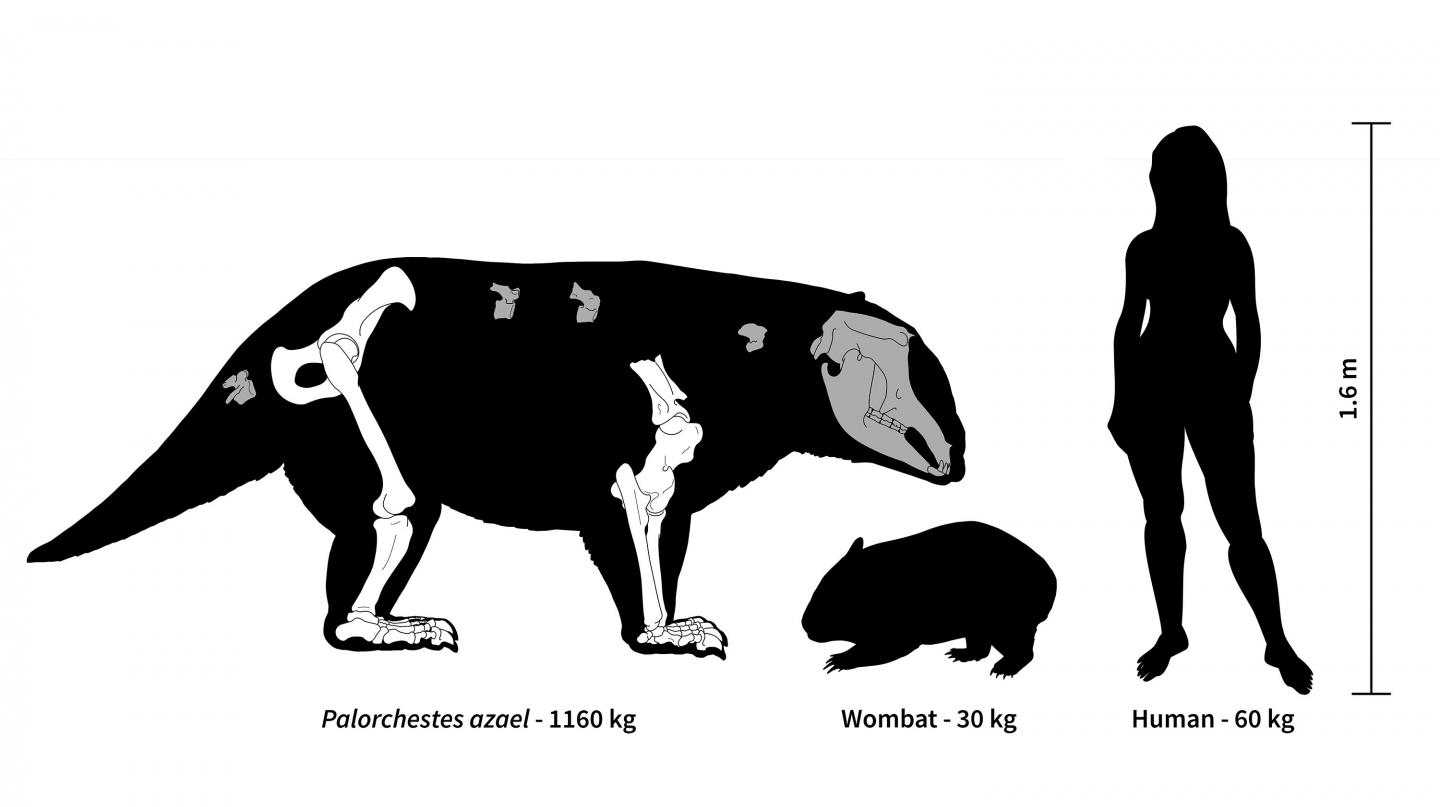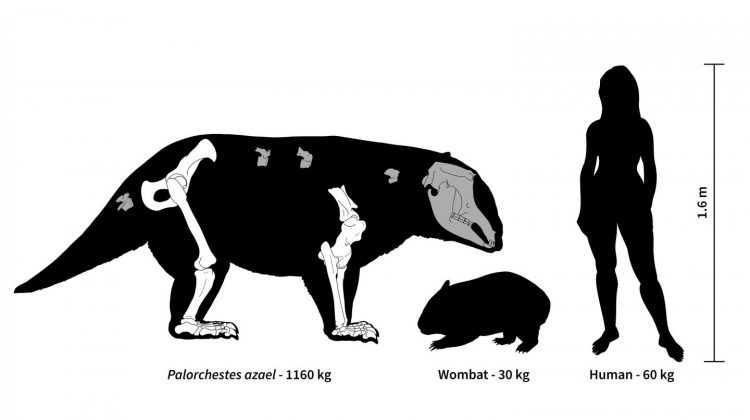Extinct palorchestid marsupials likely filled a niche no longer occupied in modern Australia

Credit: Hazel Richards (2019)
Palorchestid marsupials, an extinct group of Australian megafauna, had strange bodies and lifestyles unlike any living species, according to a study released September 13, 2019 in the open-access journal PLOS ONE by Hazel Richards of Monash University, Australia and colleagues.
For most of the last 25 million years, eastern Australia was home to a now-extinct group of marsupials called palorchestids. These animals are well known for their large size, strange tapir-like skulls, and large claws, but so far there has been no detailed study of their limb morphology. In this study, Richards and colleagues examined more than 60 fossil specimens of palorchestids of varying geologic ages to characterize the function and evolution of their arms and legs.
Over the course of their evolution, palorchestids grew larger and stranger. Using limb proportions as a proxy for body size, these authors estimated that the latest and largest of the palorchestids may have weighed over 1,000kg. Furthermore, their forelimbs were extremely muscular and were likely adapted for grabbing or scraping at leaves and branches. Uniquely among known mammals, the elbow joints of the largest palorchestids appear to have been immobile and fixed at roughly a 100-degree angle, so that the arms served as permanently flexed food-gathering tools.
This study provides the first formal description of limb morphology in palorchestid marsupials and reveals a group of giant herbivores that probably filled a niche no longer occupied in modern Australian ecosystems. Fossil remains are still missing for certain parts of the palorchestid body, such as the shoulders and wrists, but the authors are hopeful that more material may be found in existing museum collections.
The authors add: “This study has allowed us for the first time to appreciate just how huge these mega-marsupial palorchestids were, while also providing the first comprehensive view of a strange limb anatomy unprecedented in the mammalian world. This research reveals yet more about the diversity of unique large marsupials that once roamed Australia not so long ago.”
###
Citation: Richards HL, Wells RT, Evans AR, Fitzgerald EMG, Adams JW (2019) The extraordinary osteology and functional morphology of the limbs in Palorchestidae, a family of strange extinct marsupial giants. PLoS ONE 14(9): e0221824. https:/
Funding: This research was supported by an Australian Government Research Training Program Scholarship, Robert Blackwood Partnership PhD Top-Up Scholarship (HLR), internal funds from the Department of Anatomy and Developmental Biology, Monash University (JWA), and the Australian Research Council DP180101797 (ARE). The funders had no role in study design, data collection and analysis, decision to publish, or preparation of the manuscript.
Competing Interests: ARE is a Section Editor of Paleontology and JWA is an Academic Editor with PLOS ONE; however, they confirm that their positions do not alter the authors’ adherence to the PLOS ONE policies. They and the other authors have declared that no other competing interests exist. This does not alter our adherence to PLOS ONE policies on sharing data and materials.
In your coverage please use this URL to provide access to the freely available article in PLOS ONE: https:/
Media Contact
Hazel Richards
[email protected]
Related Journal Article
http://dx.





